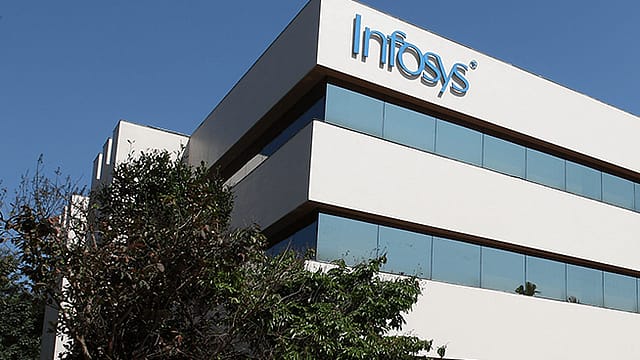Watching Infosys’ silver jubilee on the bourses
ADVERTISEMENT

Everyone loves Infosys, starting with its promoters and early shareholders, who have held on to the stock. And, why not? The “IT bellwether” (as it was fondly called for many years), and the “investors' darling” rewarded its long-term investors with handsome returns.
When Infosys celebrates its silver jubilee on the BSE, having listed on June 14, 1993, it makes sense to check how much wealth it created over these two-and-a-half decades. Just as infotech companies report their financials in Indian rupee and US dollar terms, we looked at Infosys' market performance in a similar manner.
In rupee terms, Infosys closed its first trading day on the BSE at Rs 31.62 a share. This was without adjusting the future dividends it paid, bonuses it doled out, and stock split which happened in its 25 year-journey. When these corporate actions are adjusted, the per share price of Infosys stands at 31 paise (only). In US dollar terms, Infosys closed its first day trade at $5.08 and just 1 cent on unadjusted and adjusted basis, respectively.
And, if one were to rebase Infosys' (annual average) closing share price to 100 in June 1993, its value would have grown to 411,645 as of June 13, 2018, in rupee terms. And 188,700, in US dollar terms. And, the S&P BSE Sensex, in the same time frame, would have changed from 11 to 1,604. This means Rs 100 invested in the Sensex would have yielded a CAGR of 11.74% over 25 years, or returns over 16 times the investment, at Rs 1,604.
January 2026
Netflix, which has been in India for a decade, has successfully struck a balance between high-class premium content and pricing that attracts a range of customers. Find out how the U.S. streaming giant evolved in India, plus an exclusive interview with CEO Ted Sarandos. Also read about the Best Investments for 2026, and how rising growth and easing inflation will come in handy for finance minister Nirmala Sitharaman as she prepares Budget 2026.
In comparison, the same Rs 100 would have grown 4,116 times to Rs 4.12 lakh—a CAGR of 39.5% over 25 years. And, in US dollar terms Rs 100 would have grown 1,887 times to Rs 1.89 lakh—35.22% CAGR over 25 years. Equity investments are long-term bets, and patience is eventually rewarded. These academic sermons are clearly endorsed by the multi-bagger returns delivered by the performance of Infosys on the bourses.
Fundamentally, Infosys has been among the top 50 companies in the Fortune India 500 list, which is published since 2010.
But, Infosys and its wealth creation story takes a completely different turn, if one were to see it perform vis-à-vis its peer, Tata Consultancy Services (TCS). Going by “Bhav Bhagwan Che”—the classic Gujarati saying on Dalal Street—which means that price is God or the ultimate truth, clearly, the comparatively better wealth creation opportunity debuted on the bourses in the form of TCS, on August 25, 2004—exactly 2,762 trading days after Infosys debuted.
While the rebased S&P BSE Sensex grew from 100 to 702 between August 25, 2004 and June 13, 2018, the rebased rupee value of Infosys and TCS grew to 665 and 1,477 against 100, respectively. In US dollar terms, Infosys moved from 100 to 402, while TCS moved from 100 to 1,012.
Clearly, Infosys' 6.7 times and 4.02 times growth in rupee and US dollar terms, respectively, compared with TCS' 14.8 and 10.1 times growth on similar yardstick clearly validates in hindsight that TCS was a way more powerful bet for investors.
